Alterium Shift is out in Early Access with a Linux Client
Alterium Shift is developed by Drattzy Games LLC, and published by GRAVITY GAME ARISE Co., Ltd., it draws inspiration from the golden age of Japanese Console-style role playing games (JRPG) and it runs on Linux PC and Steam Deck native or with Proton.
Preface
Quite often we get keys of games on Early Access (EA) that are usually a couple of weeks away from release, strangely this one just came out on EA, and it feels like it is a long way from a proper release. So that makes it a bit weird to review something that is under constant work.
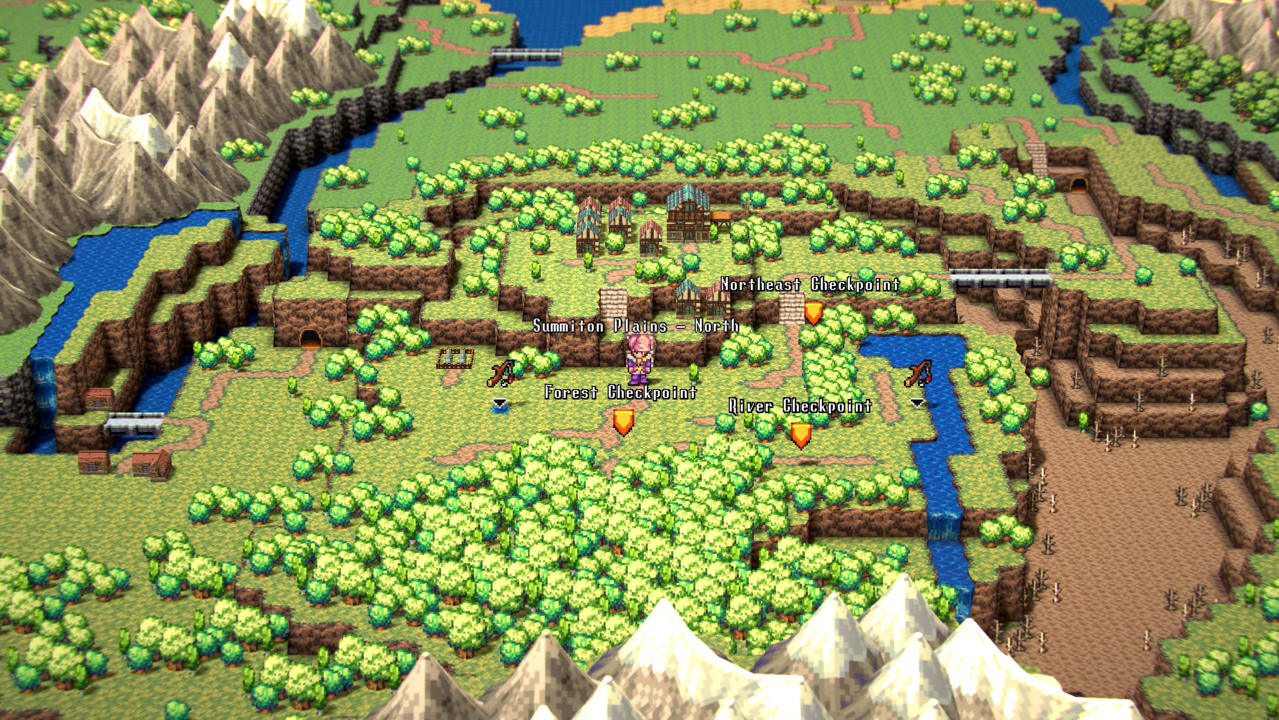
There is an enormous chance that things I write here will change by the release date, some bugs were fixed since I started this review and many improvements to the story happened. The best that can be done is to share a snapshot of the current state of the game.
Some people enjoy participating in the conception and development of a game, interacting with the devs and supporting indie games they like. Others find no thrill in paying for being a quality assurance analyst (QA) for a few months. If you are more like the former and Alterium Shift catches your attention, they have a nice community on their Discord.
Snapshot Review
The golden age of JRPGs might be around the 90s and earlier 2000s. During that time, it was a well sought style of RPG where I grew up. While the genre already had some defining characteristics from previous decades, it is when I remember seeing leaps in innovation, with many improvements in mechanics, story telling and art. Many modern JRPG-style games are inspired by some games from this era, what led to the popularity of game engines like RPG Maker, more on that later.
I think the main characteristics you will find in JRPGs are: [1] defined and focused narrative, [2] established protagonist (in contrast to making your own avatar) with [3] an ensemble of friendly NPCs to help with your quest (youth saving the world with nakama power being a common trope), [4] RPG elements like leveling up, character stats and equipable gear, [5] cartoon/anime art style, and [6] menu-driven turn-based combat.
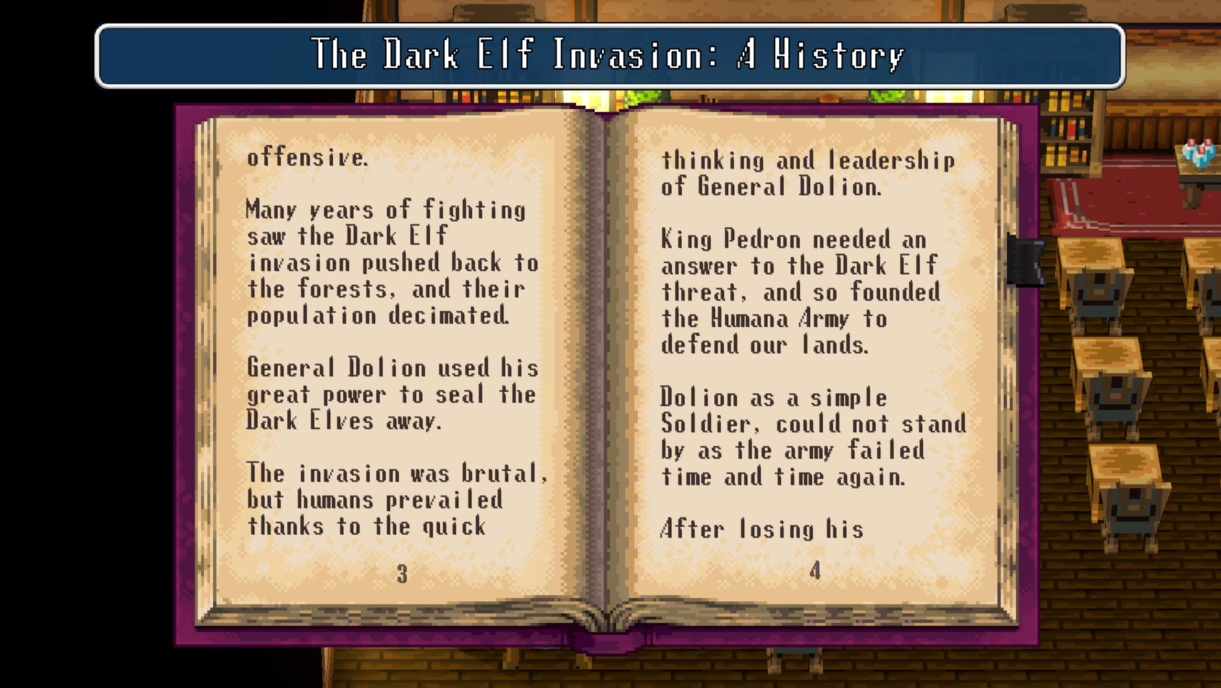
Alterium Shift’s narrative [1] follows the kids saving the world trope. But before being released into the world, you will need to “graduate” by passing a test. You will progress anyway, it will just change the rewards you get, and one of the tasks is a “written test” - I found weird that the game tells you to read a bunch of books before doing anything to get you engaged with the game first.
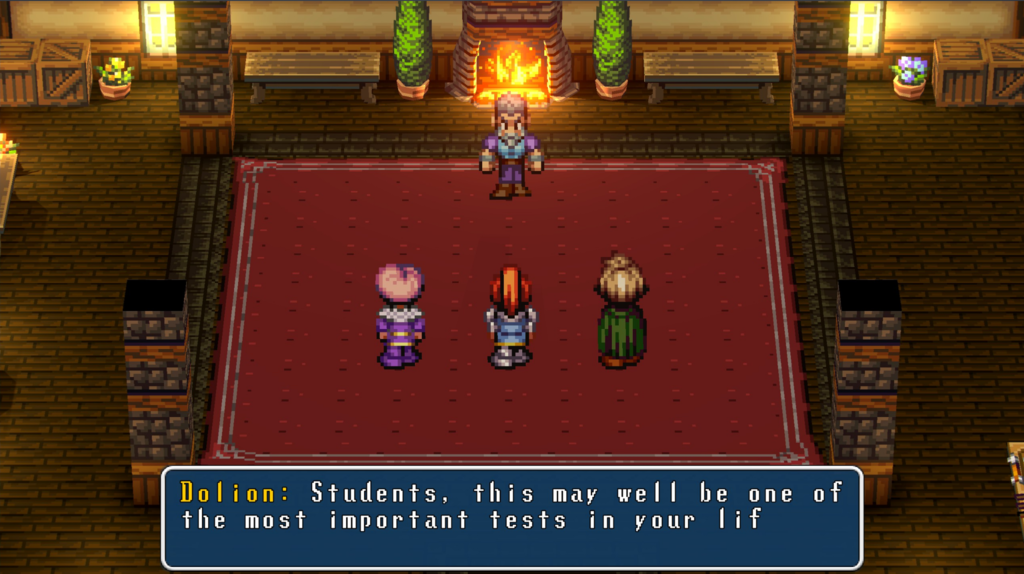
As story telling goes, I forgot a few times why I was doing what I was doing, but perhaps that tells more about the state of my memory than about the game itself.
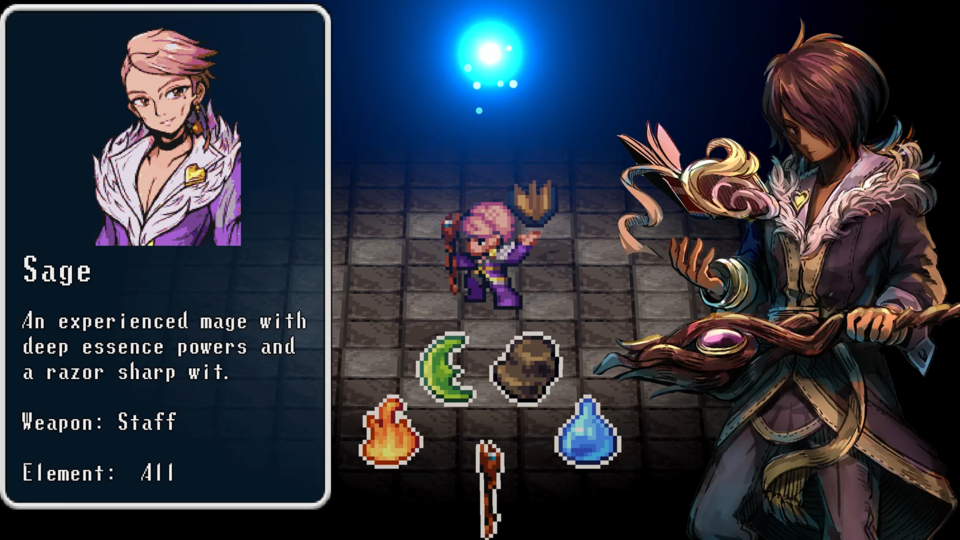
What was not my memory’s fault is how hard it was for the game to let me progress in dialog and make sense of my character [2]. When you start the game you can select between 3 characters: Atlas, an archer; Pyra, a lancer; and after much thinking, I decided to go with Sage, a witty sorcerer, since I liked the option of multiple elemental attacks.
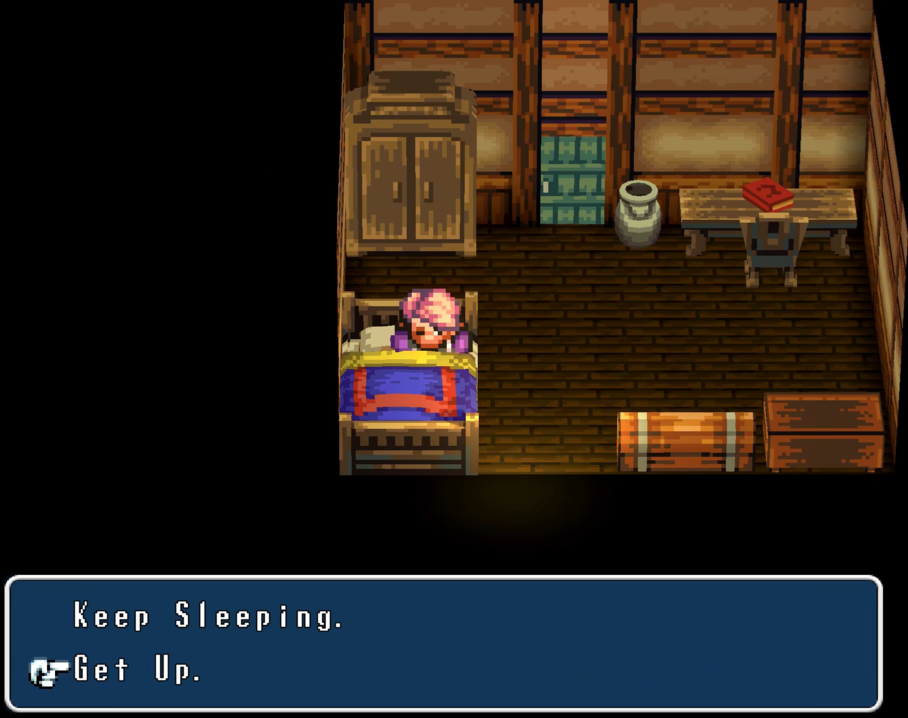
My first interaction was the game asking if I wanted to wake up, I said yes, and the game second guessed me a few times “Are you sure?”, “The bed is cozy”. This happened a few more times in different moments, “Are you sure you want to be nice to others?” I started feeling like I was playing it wrong, one of the worst feelings associated with gaming.
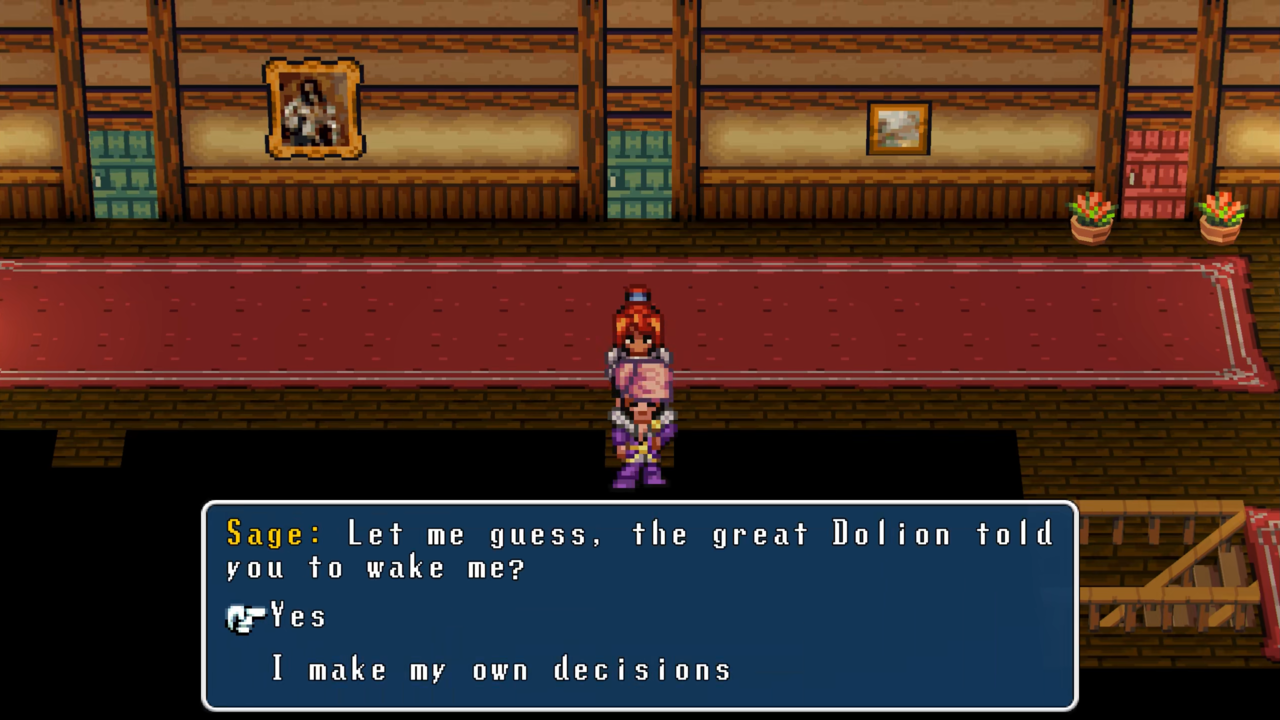
The other characters stories did not complain about my choices, but were not good either. With Atlas, the “weird” actions were taking initiative, but instead of being second guessed and scorned like Sage, you are praised. Pyra is the “leader who does not know how to follow” but I did not notice any second guessing from the game or NPCs.
I don’t like that the stories are told only with text, not with gameplay mechanics, and quite often one contradicting the other. You read so much about Pyra needing to learn how to be a leader, yet Atlas is the one that gets skills related to leadership, and how she needs to learn how to be a follower, but everything she does up to that point is to follow order from others.
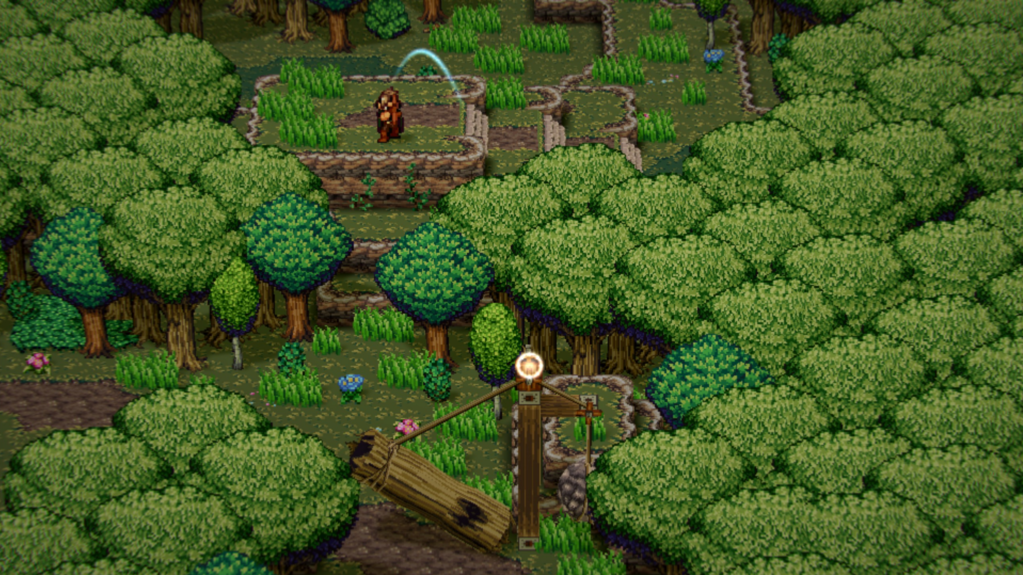
Once you finish your school tests, you will learn a skill that will define the path for each main character: Sage will be able to detect chests and secret items, Atlas can shoot arrows from vantage points and Pyra can destroy boulders — they all serve to open “doors.” Sadly, that only works for the main character; when Atlas joined my Pyra game, I was unable to use his skill.
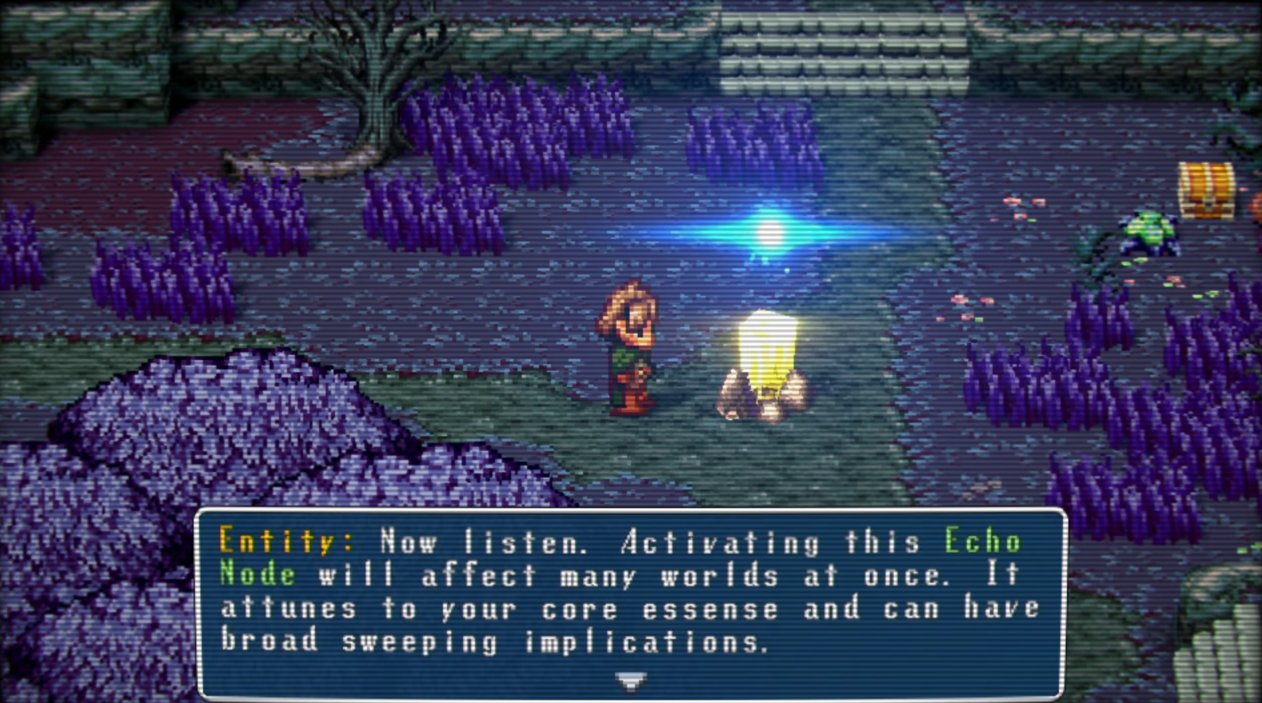
After reaching a specific area, I discovered a nice narrative mechanic about changing paths and attuning the world. You can interact with a crystal to select a color, that will unlock all doors and chests of the same color, including in other saves - I imagine there is global save shared with everyone.
Then you change your path to a different character - load a Pyra game for example, and progress with her. This could open many opportunities for interesting gameplay, but as far as I went it was not that associated with any main cross progress, only to open some optional chests.
As team building [3] goes, you will recruit the other main characters later in the game, and a few other NPCs will join your party to help in specific parts. Like your teacher during the end of your “exam,” and they will often introduce a new mechanic. In the case of your teacher, the Burst mechanic, something similar to the Limit Breaker in the Final Fantasy series, a power bar that when full allows you to release a powerful attack.
You will level up [4] the character by battling enemies on the map. Each fight gives you an amount of experience points, and when you reach the level threshold at the end of the fight, it will say you leveled up. What you get is not that clear, but by consulting the stats, you will see that it will restore and increase your hit points, alterium energy (magic points in other games), and increase some of your other stats.
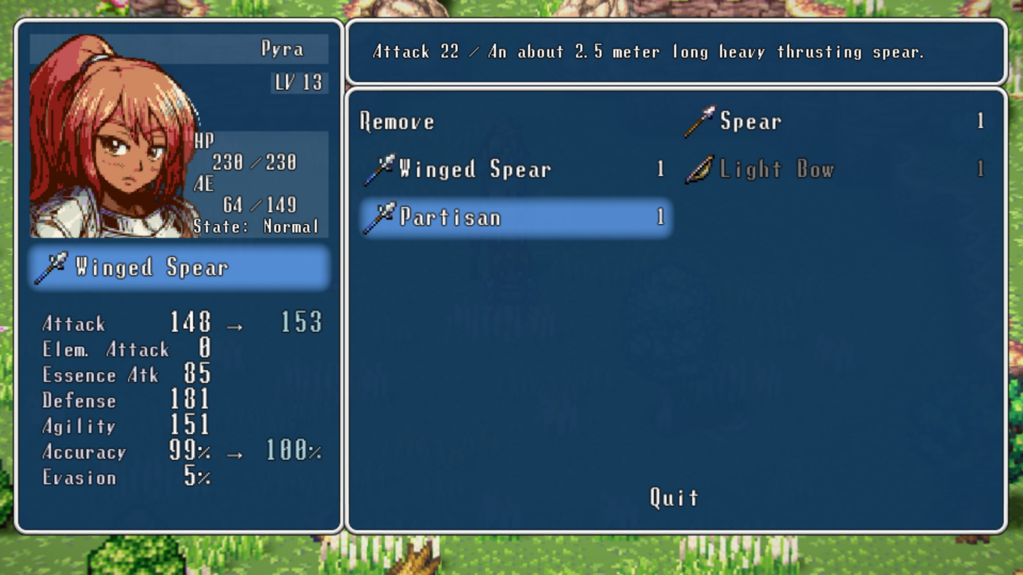
You can also improve stats with gear: weapons, shields, armors and accessories. Nothing will change on the character sprites, but they will change the numbers in the stats sheet. Some are so good, like the shoes you get in act 2, that I equipped Atlas with 2 pairs.
The game is almost well-balanced. I never felt the need to intentionally grind for levels or items and by the time I reached a new area I was about the same level as the monsters there. However, the game allows you to skip the first act. I tested it with Atlas and he was weak compared to the surrounding enemies.
As sprites goes [5] it has a pixel art anime style. But it is weird that the Steam Banner, the 2D art in the game, and the sprites follow different styles and the characters are a bit different. Maybe the game is using placeholders for the moment, I am not sure.
![]()
For sprites and tileset it seems that they are using Seliel assets. Style-wise, while modern and more detailed, they are closer to the Final Fantasy 6, where characters are similar, standing the same way with minor changes in their appearance, than from Chrono Trigger with unique characters and positions.
Games back in the day would use a reduced sprite sheet to improve performance, but I believe the choice here was purely aesthetic because there were huge frame rate drops every time it loaded new elements; sometimes they would not load at all.
The soundtrack is one of my favorite parts. They did not go with 8 or 16-bit chiptune but it sets the mood well while bringing back some nostalgia. Composed by Jonathan Shaw, you can check the OST on his website.
At the time of this review I could not find the origins of the sound effect, it is there but nothing memorable. It could have a bit more sounds to make the world more alive, like adding some for the monsters in the map and during combat.
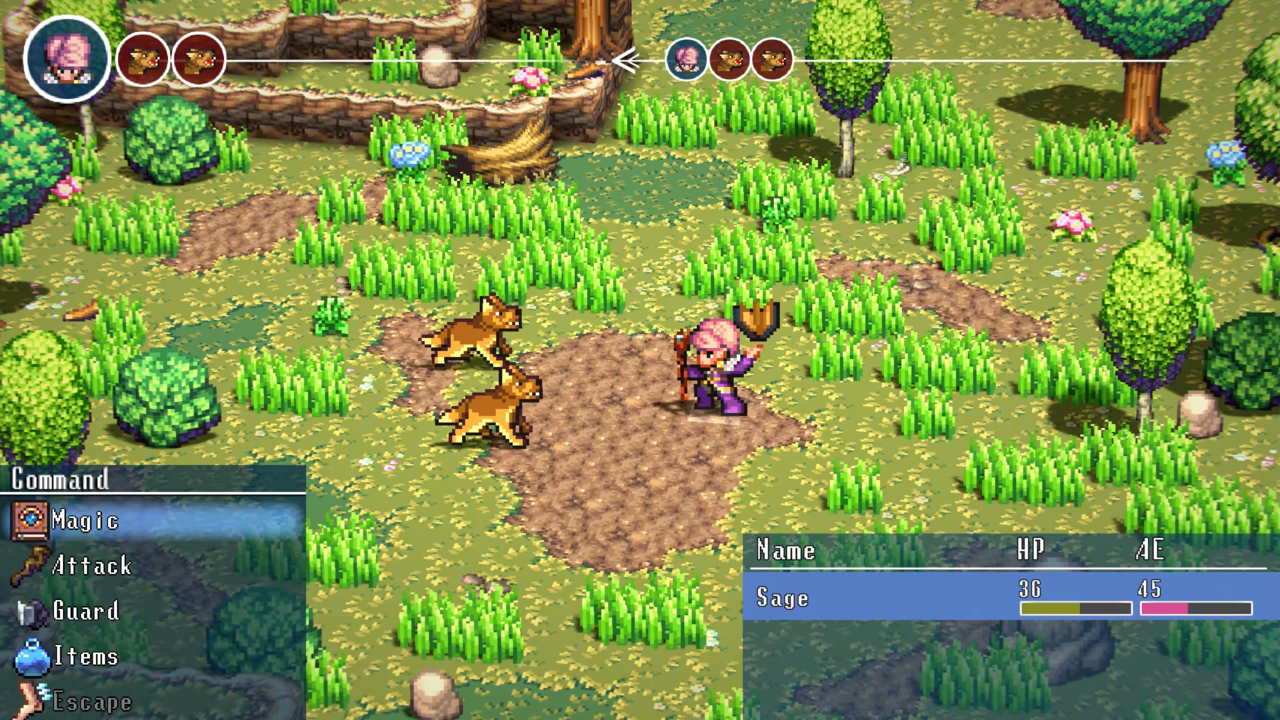
The combat is menu-driven turn-based [6]. Once the fight starts, you will see at the top of the screen the action order for each character during that round and the order expected for the next round.
When is your turn, you select between attack, skills/magic, defend/evade, use item, or flee. I never felt the need to use attack at all; it is underwhelming and just not fun. It does a fraction of skills damage and without any interesting effect or affliction. Skills uses the magic points, but you will level up a lot at the beginning and you can always stack on items to refill it.
The only use I found for defend/evade, evade being Atlas alternative to defend, was during the training fight with the teacher. He charges an attack during one turn, and habit from other games led me to defend, it worked well. I haven’t seen anything like that after.
Combat gets boring soon. There is not much variety of enemies per map, and not many mix per fight, but that is not the main fault, as they behave very similar to one another. It feels like the game numbers were balanced in a spreadsheet while forgetting mechanics and fun. Fighting becomes dull quite fast and for long. After the teacher fight, only later in the game you will fight an interesting boss in a cave because of some interactions with a skill you have.
Games from the JPRG golden age would play more around those combats. They do not need to be super tactical, just varied fun. Some enemies would drain your MP to force you into attacks (it could work here if the basic attacks were not so dull) or expend some magic refill potions, some enemies would be unreachable from melee weapons, some would remove someone from the party. There were enemies simply too strong, forcing you to take another path or learn something new. I did not feel anything like this in Alterium Shift, like looking forward to the next fight while preparing the right equipment.
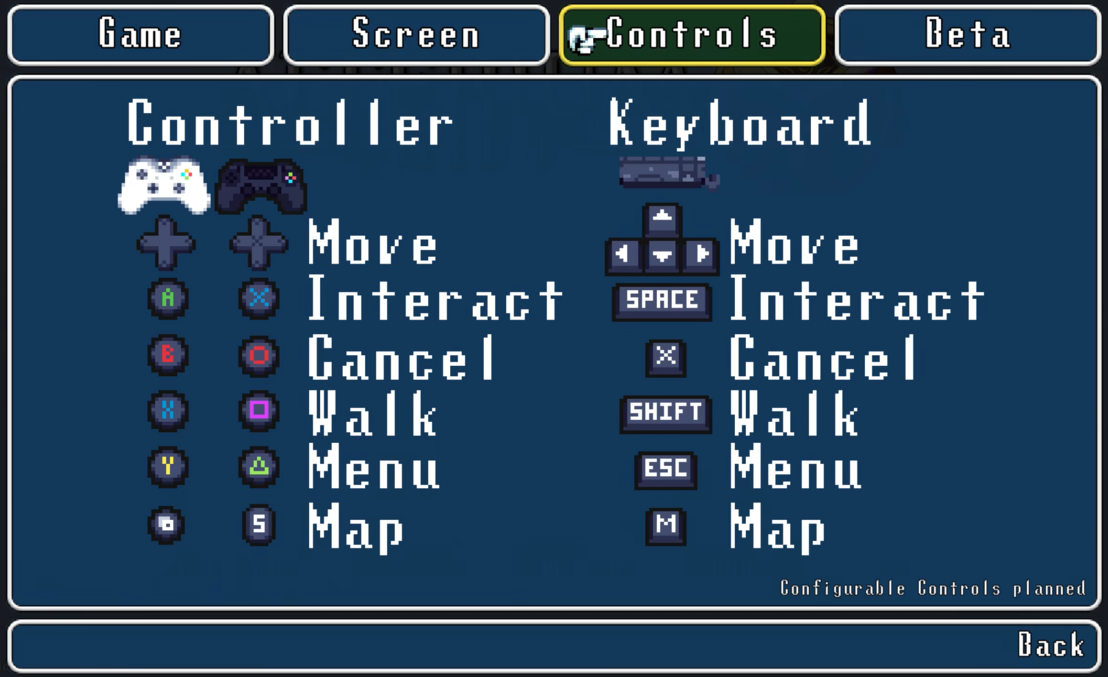
The other menus are also lackluster and hard to navigate. Buttons like the “start”, “d-pad” or “bumpers” — common in older games to open and navigate menus — are not mapped or not work properly in all menus yet. This is also tru on the Steam Deck.
Also, not all options are available during gameplay. If you want to adjust most settings or just load a game, you need to quit and access them from the main menu.
Steam Deck
One of the changes that happened while I was writing this review is that the game got verified for Deck. I am not sure what Valve tests but be aware that the game is not fully optimized for any platform yet, and it is more visible on the Deck.
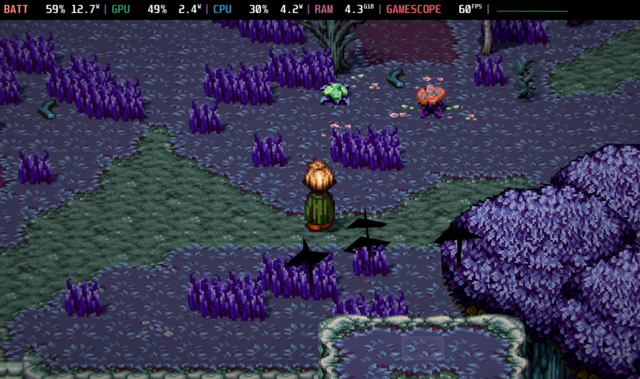
The sprite loading moments get the frames per second to a halt, and the power draw skyrockets to 20W. It is worse on Native Linux where some images did not load at all. The Alterium Shift Discord community reported it works more like intended with Proton Experimental. I tested and agree.
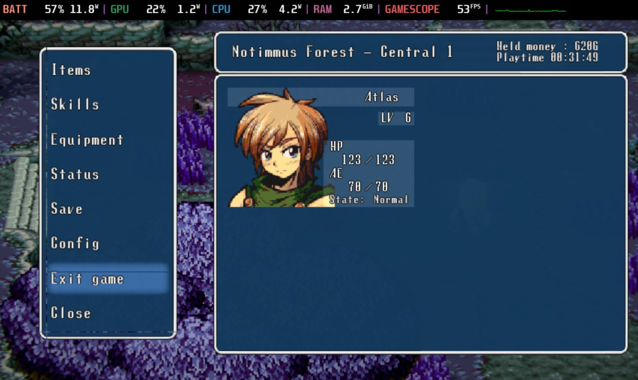
Some pixel art games work with some sort of scaler, making the game lighter and allowing use to change the resolution to reduce power draw and improve performance. I am not sure if this is the case with Alterium Shift, as reducing the resolution on both PC and Deck introduced many artifacts to the game.
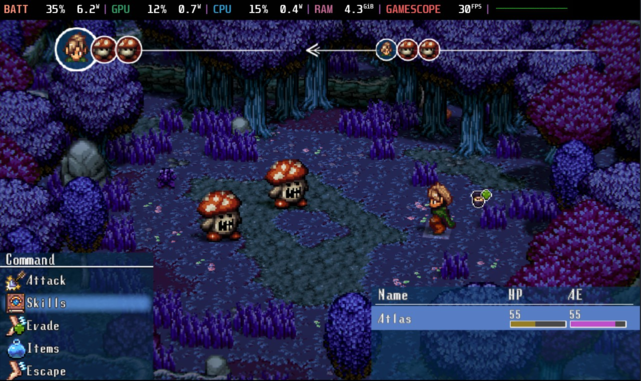
By limiting the framerate to 30 fps and the resolution to the lowest option, the power draw was under 7W - except when the game is loading new assets.
Lastly, there is no Steam Cloud yet, so your progress is local. If you play on multiple devices, or want to keep your saves backed up for the future, currently you will need a other software for that, like Syncthing for example.
Technical Aspects
I always appreciate games that let me stop when I need. Alterium Shift lets me do that often, they have an auto-save function that saves constantly and allows you to save anytime, except for battles and some plot points, like the day of the exam.
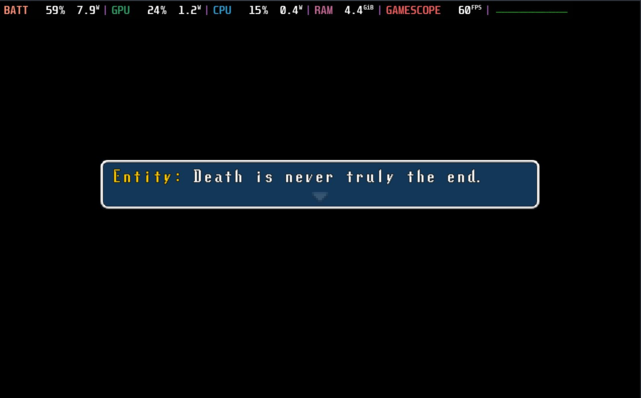
I ended up using the saving function more often than I wanted because of the number of bugs that would lock my progress, some of them would make me lose the auto-save file.
Once, after learning from the lore that there is never a game over, I suicided to the nearby enemy, the auto-save kicked in the game over screen, and the game over screen loads the last auto-save, stucking me in a loop. I had to force quit. The auto-save name, that is usually a “scene” name, was named “GameOver”.
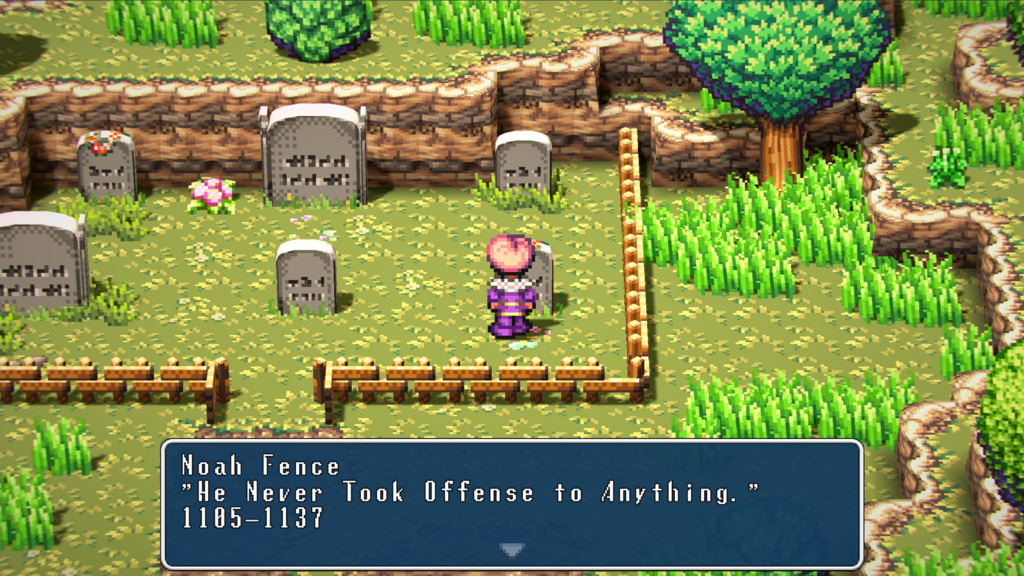
The game is made with Smile Game Builder exported to Unity and I also learned they use Arcweave for the story. Drattzy Games has 2 devs who have been working on this game since early 2021 and you can check constant updates of their progress on the game’s Discord.
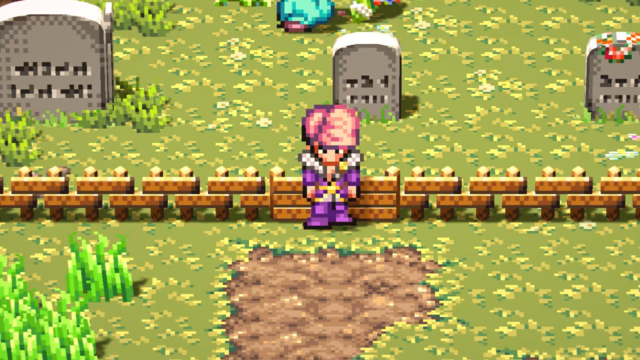
I haven’t listed all the bugs here because this is an Early Access and most of the problems I faced were already flagged by the community. Some of them are already being worked on or you can see the improvements with the Beta branch. There are instructions pinned in the Discord community on how to access the beta branch.
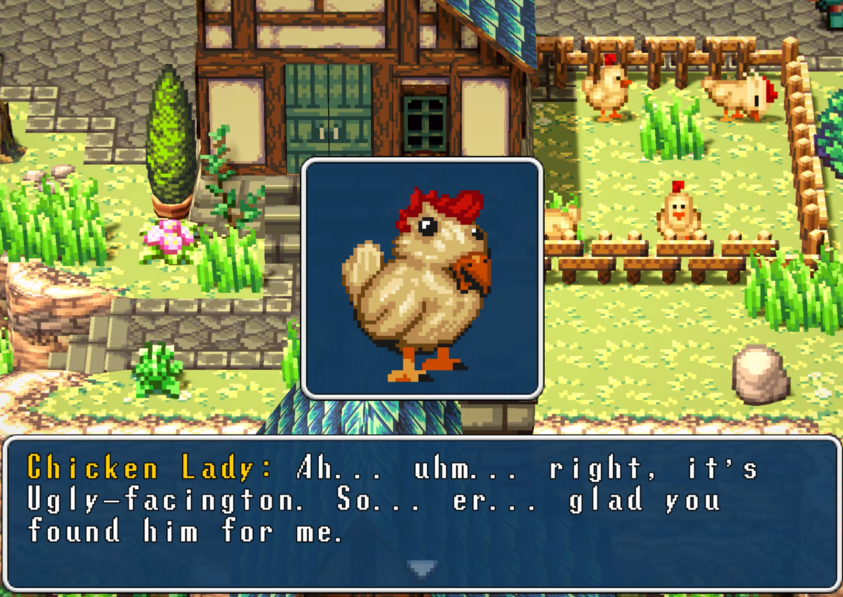
Alterium Shift is currently in Early Access, on Steam. There is also a Demo available to check if it is your cup of tea.
